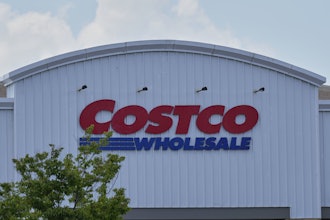The winter season is here, which means organizations are making safety compliance lists and checking them twice. Unfortunately, temporary workers are often neglected when it comes to safety planning — and that can lead to serious risks, from on-the-job injuries to hefty fines and reputational damage.
The good news is that safety incidents are preventable — and companies that include temporary workers in their safety planning will be better prepared to avoid these unnecessary risks. Here’s how.
Informed Employees are Productive Employees
Many companies use staffing agencies to recruit temporary workers for special projects or one-off projects during their peak seasons. Utilizing temp workers for different work assignments allows businesses to increase productivity and meet important deadlines. However, many of these workers do not receive proper safety training from their employers before starting.
For example, some temp workers receive a brief, yet shallow safety overview — simply to ensure compliance with the U.S. Department of Labor’s Occupational Safety and Health Administration (OSHA) — that’s never revisited during their work terms. This is the kind of misstep that frequently leads to more on-the-job injuries.
Safety is a Shared Responsibility
When partnering with a staffing company, be sure to discuss safety expectations as early as possible. Indeed, employers and their staffing partners share responsibility for employee safety according to OSHA’s “Temporary Workers Initiative.” So be clear about what your organization will cover in the onboarding program, and ensure that any site and job-specific risks are discussed. Employers can also ask that staffing partners help fill any knowledge gaps for employees. By working together proactively and transparently, companies can ensure that all employees, including temporary workers, are protected.
Keep the following tips in mind when working with a staffing partner.
- Employers and their staffing partners must both comply with workplace safety and health requirements.
- Employers and their staffing partners should work together to understand on-site safety hazards and how to prevent accidents.
- Staffing partners must inquire into workplace conditions and ensure the safety of all contracted employees.
- Staffing partners must know the conditions and hazards at job sites, including any requirements related to protection and safety.
- Staffing partners must ensure that companies have fulfilled their responsibilities for workplace safety.
- Companies must provide the same safety training and resources for temporary workers that they do for all other workers.
You should assign a senior-level executive in your organization to draft safety requirements for staffing contracts, and be sure to update these safety terms on a per-project basis. You should also provide ongoing safety training and stay up to date on the latest OSHA recordkeeping requirements. After all, when workers feel valued and protected, they’re not only more productive but more likely to return for future job opportunities.
Your Reputation will be Iced
How much does safety matter to you? The truth is, it should be as important to you as the reputation of your business — because that’s what’s at stake. Without a strong safety plan for both temporary and full-time workers, you expose yourself to workers’ compensation claims, civil lawsuits, insurance claims, regulatory fines and worse. Aside from the monetary costs of workplace injuries, the price your organization’s reputation pays for negligence is detrimental. A poor reputation in providing worker safety can cause valuable workers to turn down job opportunities with your company. In fact, according to a recent study, 86 percent of workers wouldn’t apply for jobs with — or continue to work for — companies that have bad reputations.
Turn up the Heat on Seasonal Safety
The only way for safety to really make an impact on your business is to make it a part of the culture from the top down. And doing so can add significant value to your bottom line. For instance, according to OSHA, workplaces that establish safety and health management systems can reduce injury and illness costs by 20 to 40 percent.
Winter may already be here, but it’s not too late to strengthen your safety strategy. Use the following questions to determine whether your safety plan needs some help this season.
- How does your organization set safety goals?
- Is there a designated person in the C-suite that assesses safety risks?
- Are safety risks easily identified and controlled at the front line?
- Are goals tied to incident prevention and continual improvement efforts, not just incident history and OSHA citations?
- Has safety impacted employee turnover rates this year?
- Are safety resources readily available for all employees, including temporary workers?
If your safety plan isn’t up to par, the time to take action is now — and make sure every employee is protected, including temporary workers. Instead of another pro forma safety check this winter, implement a proactive strategy that will help you weather any safety storm.
Corey Berghoefer is the Senior Vice President of Risk Management & Insurance, Randstad US.























